-
 Bitcoin
Bitcoin $84,734.8249
-0.50% -
 Ethereum
Ethereum $1,594.1623
-0.39% -
 Tether USDt
Tether USDt $1.0000
0.01% -
 XRP
XRP $2.0674
-1.00% -
 BNB
BNB $593.9520
0.29% -
 Solana
Solana $139.3397
0.42% -
 USDC
USDC $1.0000
0.01% -
 Dogecoin
Dogecoin $0.1569
-1.33% -
 TRON
TRON $0.2416
-0.09% -
 Cardano
Cardano $0.6245
-0.91% -
 UNUS SED LEO
UNUS SED LEO $9.3277
-0.33% -
 Chainlink
Chainlink $12.9746
0.85% -
 Avalanche
Avalanche $19.6103
0.48% -
 Stellar
Stellar $0.2447
-0.92% -
 Toncoin
Toncoin $2.9844
-0.21% -
 Shiba Inu
Shiba Inu $0.0...01238
1.47% -
 Sui
Sui $2.1341
-0.78% -
 Hedera
Hedera $0.1641
-1.30% -
 Bitcoin Cash
Bitcoin Cash $334.7157
-1.07% -
 Polkadot
Polkadot $3.8717
3.85% -
 Hyperliquid
Hyperliquid $17.7266
-2.23% -
 Litecoin
Litecoin $76.5582
0.51% -
 Bitget Token
Bitget Token $4.4968
0.91% -
 Dai
Dai $0.9999
-0.01% -
 Ethena USDe
Ethena USDe $0.9992
0.01% -
 Pi
Pi $0.6322
-2.17% -
 Monero
Monero $216.7871
1.87% -
 Uniswap
Uniswap $5.2694
-0.02% -
 Pepe
Pepe $0.0...07469
2.80% -
 OKB
OKB $50.6357
0.12%
How to Manage Cryptocurrency: Hot Wallet vs. Cold Wallet Best Practices
To manage cryptocurrency securely, use hot wallets for daily transactions and cold wallets for long-term storage, balancing convenience and security effectively.
Apr 17, 2025 at 02:07 am
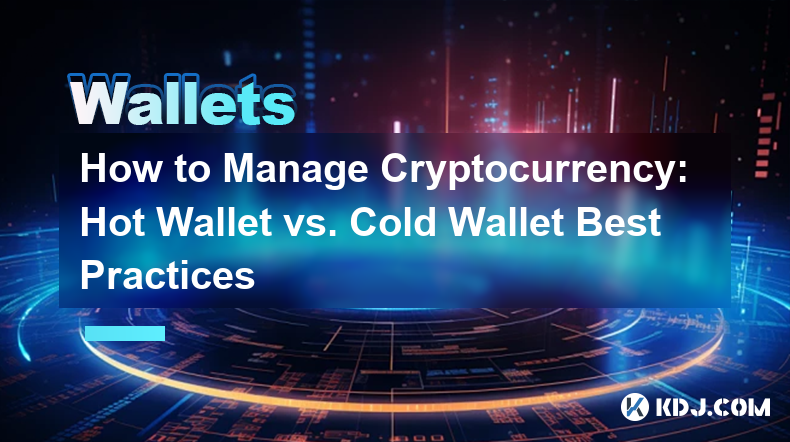
Managing cryptocurrency effectively requires understanding the different types of wallets available and their respective security features. Among the most discussed options are hot wallets and cold wallets. Each serves a unique purpose and comes with its own set of best practices. This article will delve into the specifics of both types of wallets, providing detailed guidance on how to manage your cryptocurrency securely.
Understanding Hot Wallets
Hot wallets are digital wallets that are connected to the internet, making them convenient for frequent transactions. They are typically offered by cryptocurrency exchanges and can be accessed via web browsers, mobile apps, or desktop applications. Due to their online nature, hot wallets are more susceptible to hacking and cyber attacks.
To manage a hot wallet effectively, consider the following best practices:
- Choose a reputable provider: Opt for well-known and trusted platforms that have a strong track record of security. Research user reviews and security audits to ensure the provider's reliability.
- Enable two-factor authentication (2FA): This adds an additional layer of security by requiring a second form of verification, such as a text message or an authentication app, before accessing your wallet.
- Use strong, unique passwords: Avoid using easily guessable passwords. Instead, create complex passwords that combine letters, numbers, and special characters. Use a password manager to keep track of your passwords securely.
- Monitor your wallet regularly: Keep an eye on your transaction history and account balances. If you notice any unauthorized activity, take immediate action to secure your account.
- Limit the amount stored: Since hot wallets are more vulnerable to attacks, it's advisable to keep only the amount of cryptocurrency you need for daily transactions. Transfer larger amounts to a more secure storage option, like a cold wallet.
Understanding Cold Wallets
Cold wallets, on the other hand, are offline storage solutions that are not connected to the internet, providing a higher level of security. They come in various forms, including hardware wallets, paper wallets, and even physical coins. Cold wallets are ideal for long-term storage and holding larger amounts of cryptocurrency.
To manage a cold wallet effectively, follow these best practices:
- Select a reputable hardware wallet: If you choose a hardware wallet, opt for well-known brands like Ledger or Trezor, which have established reputations for security and reliability.
- Keep your recovery phrase secure: When setting up a hardware wallet, you'll be given a recovery phrase. This phrase is crucial for recovering your wallet if it's lost or damaged. Store it in a safe, secure location, such as a safe deposit box or a fireproof safe.
- Use the wallet's built-in security features: Many hardware wallets come with additional security features, such as PIN codes and passphrases. Make use of these to add extra layers of protection.
- Regularly update your wallet's firmware: Manufacturers often release firmware updates to fix security vulnerabilities. Keep your hardware wallet up to date to ensure it remains secure.
- Be cautious with public computers: If you need to access your cold wallet on a computer, ensure it's a trusted device. Avoid using public computers or devices that may be compromised.
Balancing Hot and Cold Wallets
For most cryptocurrency users, a balanced approach that utilizes both hot and cold wallets can provide the best of both worlds. By using a hot wallet for daily transactions and a cold wallet for long-term storage, you can maximize both convenience and security.
Here are some tips for effectively balancing the use of hot and cold wallets:
- Determine your needs: Assess how often you need to access your cryptocurrency and how much you typically transact. This will help you decide how to split your holdings between hot and cold wallets.
- Transfer funds as needed: Regularly move cryptocurrency from your cold wallet to your hot wallet as needed for transactions. Conversely, move any surplus from your hot wallet to your cold wallet for safekeeping.
- Keep records: Maintain detailed records of your transactions and wallet balances. This will help you keep track of your cryptocurrency holdings and ensure that you're managing them effectively.
Security Measures for Both Wallet Types
Regardless of the type of wallet you use, implementing robust security measures is crucial for protecting your cryptocurrency. Here are some general security practices to follow:
- Use antivirus software: Protect your devices with up-to-date antivirus software to guard against malware and other cyber threats.
- Beware of phishing attempts: Be cautious of emails, messages, or websites that ask for your wallet information or private keys. Always verify the authenticity of any communication before responding.
- Keep your private keys private: Never share your private keys or recovery phrases with anyone. These are the keys to your cryptocurrency, and sharing them can lead to theft.
- Educate yourself: Stay informed about the latest security threats and best practices in the cryptocurrency space. Knowledge is your best defense against potential attacks.
Choosing the Right Wallet for You
Selecting the right wallet depends on your specific needs and risk tolerance. Consider the following factors when making your decision:
- Frequency of transactions: If you need to make frequent transactions, a hot wallet may be more suitable. For less frequent transactions, a cold wallet offers better security.
- Amount of cryptocurrency: If you're holding a large amount of cryptocurrency, a cold wallet is a safer option. For smaller amounts that you need for daily use, a hot wallet can be more convenient.
- Level of technical expertise: Hot wallets are generally easier to use and require less technical knowledge. Cold wallets, especially hardware wallets, may require more setup and understanding but offer enhanced security.
Practical Steps for Setting Up a Hot Wallet
Setting up a hot wallet involves several steps to ensure you do so securely. Here's a detailed guide:
- Choose a reputable provider: Research and select a trusted cryptocurrency exchange or wallet service that offers a hot wallet solution.
- Create an account: Sign up for an account with the chosen provider. You'll typically need to provide an email address and create a strong password.
- Enable two-factor authentication (2FA): Go to your account settings and enable 2FA. Choose a method like an authentication app or SMS verification.
- Deposit cryptocurrency: Once your account is set up, you can deposit cryptocurrency into your hot wallet. Navigate to the deposit section, and follow the instructions to send cryptocurrency to your wallet address.
- Set transaction limits: Some providers allow you to set transaction limits, which can help prevent unauthorized large withdrawals. Configure these limits according to your needs.
- Regularly monitor your wallet: Keep an eye on your wallet's transaction history and balance. Set up notifications if available to alert you of any activity.
Practical Steps for Setting Up a Cold Wallet
Setting up a cold wallet, particularly a hardware wallet, involves a few more steps but provides enhanced security. Here's how to do it:
- Purchase a reputable hardware wallet: Buy a hardware wallet from a trusted manufacturer like Ledger or Trezor. Ensure you purchase from an official source to avoid counterfeit products.
- Unbox and initialize the device: Follow the manufacturer's instructions to unbox and initialize your hardware wallet. This usually involves connecting it to a computer via USB.
- Set up a PIN code: Most hardware wallets require you to set up a PIN code for additional security. Choose a strong PIN and remember it.
- Generate and store your recovery phrase: The device will generate a recovery phrase, typically consisting of 12 or 24 words. Write this down and store it in a secure location. Do not store it digitally or share it with anyone.
- Install the wallet software: Download and install the wallet software from the manufacturer's official website. Ensure you're downloading the correct software for your device.
- Connect and set up the wallet: Connect your hardware wallet to your computer and open the wallet software. Follow the on-screen instructions to set up your wallet and add cryptocurrency.
- Transfer cryptocurrency to your cold wallet: Once your cold wallet is set up, you can transfer cryptocurrency to it from a hot wallet or an exchange. Follow the instructions to send cryptocurrency to your cold wallet address.
Frequently Asked Questions
Q: Can I use both a hot wallet and a cold wallet simultaneously?
Yes, using both types of wallets simultaneously is a common practice. You can keep a small amount of cryptocurrency in a hot wallet for daily transactions and store the majority of your holdings in a cold wallet for long-term security.
Q: How often should I transfer cryptocurrency between my hot and cold wallets?
The frequency of transfers depends on your transaction needs. If you frequently need to access your cryptocurrency, you might transfer funds weekly or even daily. For less frequent needs, monthly transfers might be sufficient. Always ensure you're not keeping more in your hot wallet than necessary.
Q: What should I do if I lose my hardware wallet?
If you lose your hardware wallet, you can recover your cryptocurrency using the recovery phrase you stored securely. Use the recovery phrase to set up a new hardware wallet or use a compatible software wallet to access your funds. It's crucial to keep your recovery phrase safe and never share it with anyone.
Q: Are there any fees associated with using hot and cold wallets?
Yes, there can be fees associated with both types of wallets. Hot wallets often have transaction fees when sending or receiving cryptocurrency, and some providers may charge for account maintenance or withdrawals. Cold wallets, particularly hardware wallets, have an initial purchase cost, but typically do not have ongoing fees. Always check the fee structure of your chosen wallet provider.
Disclaimer:info@kdj.com
The information provided is not trading advice. kdj.com does not assume any responsibility for any investments made based on the information provided in this article. Cryptocurrencies are highly volatile and it is highly recommended that you invest with caution after thorough research!
If you believe that the content used on this website infringes your copyright, please contact us immediately (info@kdj.com) and we will delete it promptly.
- Bitcoin (BTC) Price on the Edge of a Major Breakout, New ATH Target of $130k
- 2025-04-20 16:55:13
- Bitcoin Dominance hasn't Exhausted Its Upside Trajectory Yet, Jan3 CEO Samson Mow Says
- 2025-04-20 16:55:13
- title: Veteran trader Peter Brandt predicts that S&P 500, Bitcoin (BTC) and Ethereum (ETH) will see much lower levels by the end of the year.
- 2025-04-20 16:50:13
- Oregon Sues Coinbase, Claiming the Cryptocurrency Exchange Broke State Securities Laws
- 2025-04-20 16:50:13
- Optimism Bitcoin (OP) Is Showing Bullish Technical Indicators, Suggesting a Potential Breakout and Future Price Surge
- 2025-04-20 16:45:13
- Trump's Attempt to Remove Fed Chair Jerome Powell Could Cause Financial Chaos
- 2025-04-20 16:45:13
Related knowledge
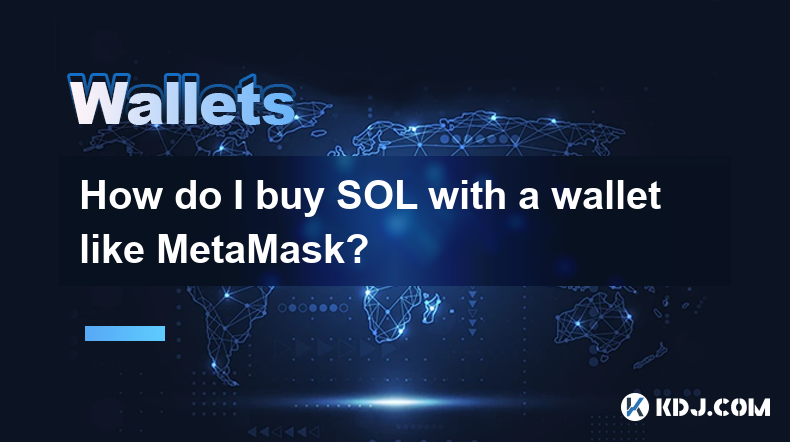
How do I buy SOL with a wallet like MetaMask?
Apr 20,2025 at 01:35pm
How do I Buy SOL with a Wallet Like MetaMask? Purchasing Solana (SOL) using a wallet like MetaMask involves a few steps, as MetaMask primarily supports Ethereum and Ethereum-based tokens. However, with the help of decentralized exchanges (DEXs) and some intermediary steps, you can acquire SOL. This article will guide you through the process in detail. S...
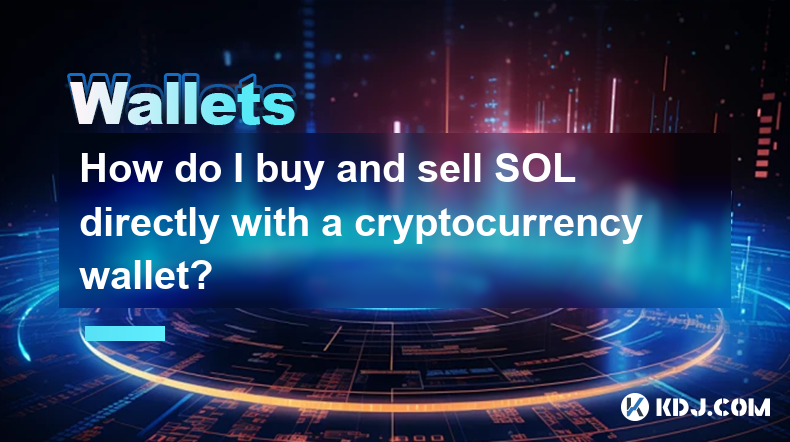
How do I buy and sell SOL directly with a cryptocurrency wallet?
Apr 19,2025 at 05:35pm
Introduction to Buying and Selling SOL with a Cryptocurrency WalletBuying and selling Solana (SOL) directly from a cryptocurrency wallet offers a convenient and secure way to manage your digital assets. Cryptocurrency wallets are essential tools for anyone looking to interact with the Solana blockchain. They allow you to store, send, and receive SOL wit...
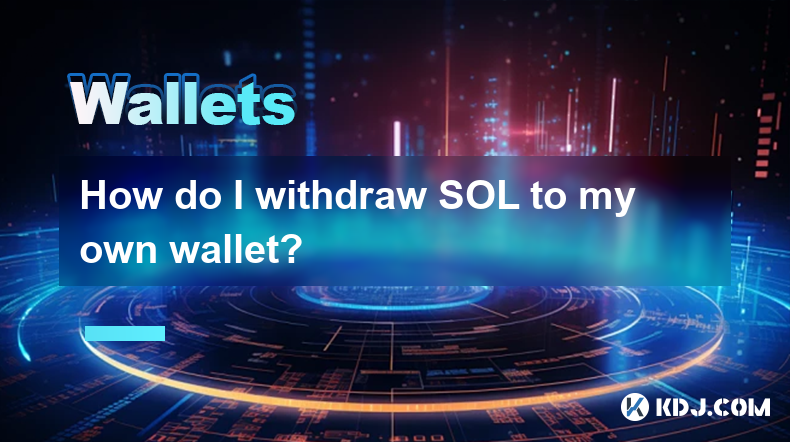
How do I withdraw SOL to my own wallet?
Apr 20,2025 at 04:21pm
Introduction to Withdrawing SOL to Your Own WalletWithdrawing Solana (SOL) to your own wallet is a straightforward process, but it requires careful attention to detail to ensure that your funds are transferred safely and efficiently. SOL is the native cryptocurrency of the Solana blockchain, known for its high throughput and low transaction fees. Whethe...
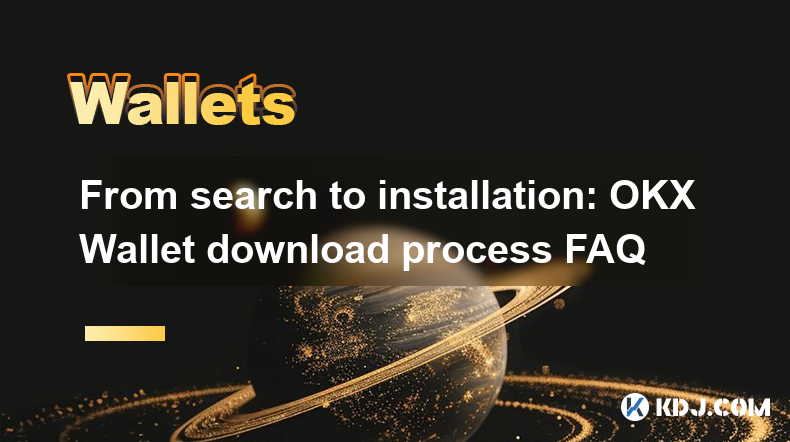
From search to installation: OKX Wallet download process FAQ
Apr 17,2025 at 02:00pm
The OKX Wallet is a popular choice among cryptocurrency enthusiasts for managing their digital assets securely and efficiently. Understanding the process from searching for the wallet to its installation can be crucial for new users. This article will guide you through the entire process, providing detailed steps and answers to frequently asked question...
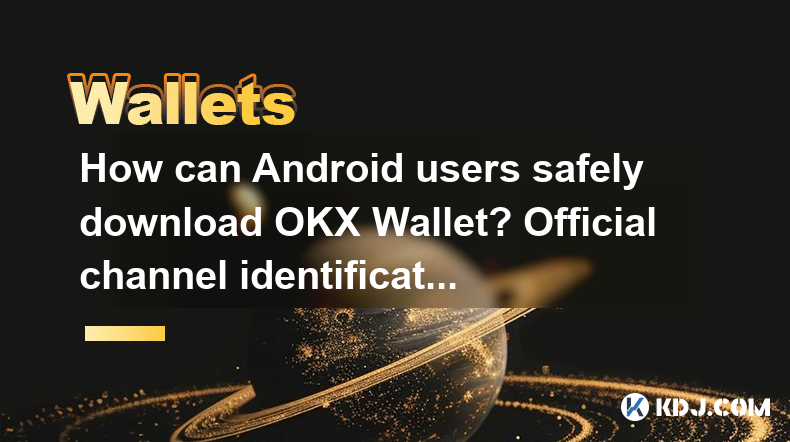
How can Android users safely download OKX Wallet? Official channel identification guide
Apr 19,2025 at 10:50pm
How can Android users safely download OKX Wallet? Official channel identification guide Ensuring the safety and security of your cryptocurrency assets begins with downloading apps from trusted sources. For Android users interested in using OKX Wallet, it's crucial to identify and use the official channels to avoid downloading malicious software. This gu...
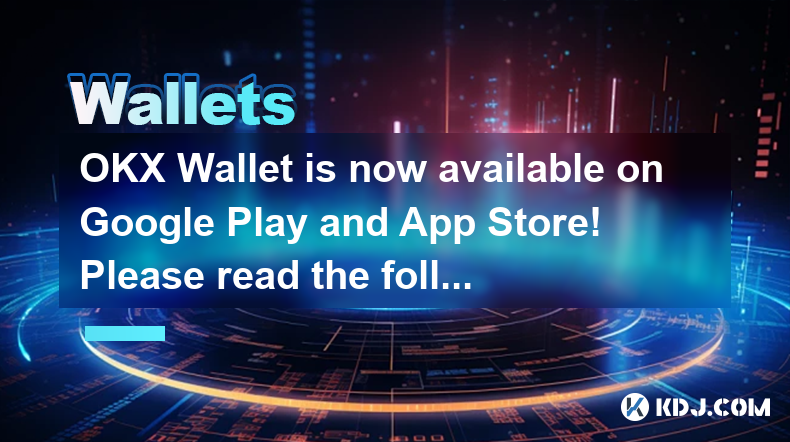
OKX Wallet is now available on Google Play and App Store! Please read the following points before downloading
Apr 18,2025 at 10:21pm
OKX Wallet has recently become available on both the Google Play Store and the Apple App Store, marking a significant step forward in accessibility for users interested in managing their cryptocurrencies. Before you proceed to download the app, it's crucial to understand some key points to ensure a smooth and secure experience. This article will guide y...

How do I buy SOL with a wallet like MetaMask?
Apr 20,2025 at 01:35pm
How do I Buy SOL with a Wallet Like MetaMask? Purchasing Solana (SOL) using a wallet like MetaMask involves a few steps, as MetaMask primarily supports Ethereum and Ethereum-based tokens. However, with the help of decentralized exchanges (DEXs) and some intermediary steps, you can acquire SOL. This article will guide you through the process in detail. S...

How do I buy and sell SOL directly with a cryptocurrency wallet?
Apr 19,2025 at 05:35pm
Introduction to Buying and Selling SOL with a Cryptocurrency WalletBuying and selling Solana (SOL) directly from a cryptocurrency wallet offers a convenient and secure way to manage your digital assets. Cryptocurrency wallets are essential tools for anyone looking to interact with the Solana blockchain. They allow you to store, send, and receive SOL wit...

How do I withdraw SOL to my own wallet?
Apr 20,2025 at 04:21pm
Introduction to Withdrawing SOL to Your Own WalletWithdrawing Solana (SOL) to your own wallet is a straightforward process, but it requires careful attention to detail to ensure that your funds are transferred safely and efficiently. SOL is the native cryptocurrency of the Solana blockchain, known for its high throughput and low transaction fees. Whethe...

From search to installation: OKX Wallet download process FAQ
Apr 17,2025 at 02:00pm
The OKX Wallet is a popular choice among cryptocurrency enthusiasts for managing their digital assets securely and efficiently. Understanding the process from searching for the wallet to its installation can be crucial for new users. This article will guide you through the entire process, providing detailed steps and answers to frequently asked question...

How can Android users safely download OKX Wallet? Official channel identification guide
Apr 19,2025 at 10:50pm
How can Android users safely download OKX Wallet? Official channel identification guide Ensuring the safety and security of your cryptocurrency assets begins with downloading apps from trusted sources. For Android users interested in using OKX Wallet, it's crucial to identify and use the official channels to avoid downloading malicious software. This gu...

OKX Wallet is now available on Google Play and App Store! Please read the following points before downloading
Apr 18,2025 at 10:21pm
OKX Wallet has recently become available on both the Google Play Store and the Apple App Store, marking a significant step forward in accessibility for users interested in managing their cryptocurrencies. Before you proceed to download the app, it's crucial to understand some key points to ensure a smooth and secure experience. This article will guide y...
See all articles























































































